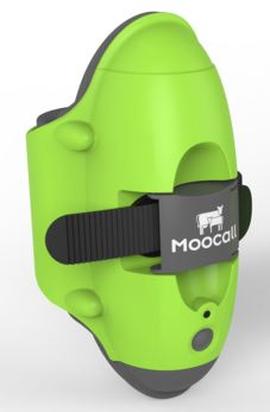The vague promise of the “Internet of Things” was that all kinds of devices – such as toasters and fridges – would be connected together in smart networks. I don’t remember cows being mentioned, but they could be, now that Moocall sensors enable farmers to “remotely manage and monitor” their bovine workforce via Vodafone’s “global IoT platform”.
Moocall isn’t a simple tagging operation to avoid rustling, or to collect cows that have wandered off somewhere. It’s a matter of life and death.

Photo: Moocall
According to Vodafone, more than 110,000 calves and around 50,000 cows die every year due to birth complications. The battery-powered Moocall senses when pregnant cows are ready to calve by measuring the tail movements triggered by labour contractions. About an hour before the calving, the sensor uses GSM to send an alert to one or two mobile phones and up to three email addresses. The farmer can then respond, and call in a vet if necessary. The time is settable: it could be two or three hours if the farmer expects a difficult birth.
Farmers don’t need to buy one sensor per cow. The farmer just fits a sensor a couple of days before they expect the cow to give birth. According to a report in Canadian Cattlemen, you might need one sensor for 30 cows, “depending on your calving schedule and system”.
Multiple Moocall sensors are managed using a free Android or Apple iPhone app.
A cow can be worth anything from £1,000 to £5,000, so the system could help save up to £50m ($60m) worth of cows per year. The system basically pays for itself if it saves the life of a single calf.
Vodafone claims that “around 150,000 calves in the UK and Ireland have been born safely using Moocall’s non-invasive, tail-mounted sensor.” An earlier calving sensor had to be inserted into the cow. Moocall is just attached to the tail, so it counts as a wearable.
Moocall was developed by Niall Austin, an Irish farmer who lost both calf and a cow due to an unexpected calving. The system was launched in Ireland in September 2014. It is now used in more than 30 countries from New Zealand to France to Canada.
Vodafone’s IoT platform supports the Narrowband Internet of Things (Nb-IoT) standard which provides “extended coverage – rural and deep indoors” along with higher spectrum efficiency and better battery life. It can co-exist with 2G, 3G, and 4G mobile networks.
